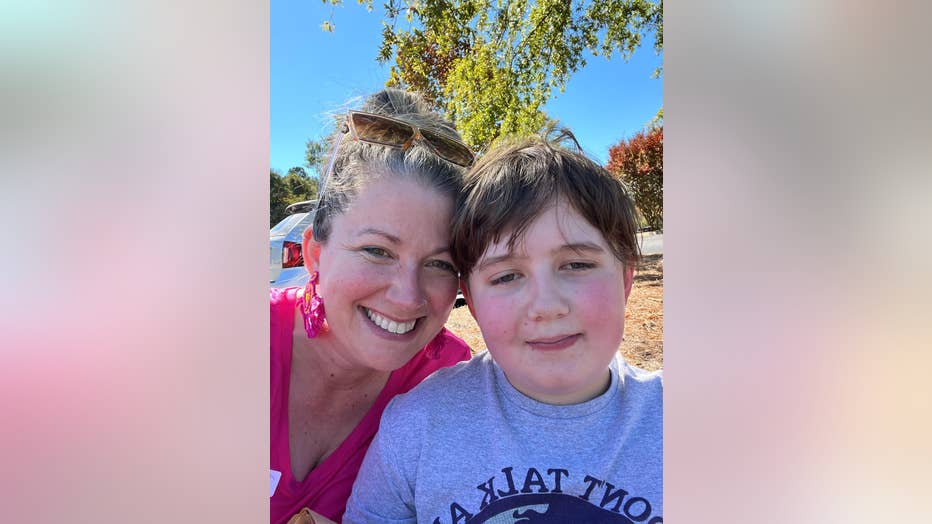Georgia boy, now 12, was one of first to try a groundbreaking eye-tracking system to help diagnose autism
Eyes could help diagnose autism early
Researchers in Atlanta have developed a tool to help diagnose autism in younger children. The device tracks the child's eye movement as he or she watches a series of videos on a tablet. The hope is this will help detect autism spectrum disorders earlier and more effectively.
ATLANTA - Renee Britt says her middle son, 12-year-old Dawson, has come a long way since he was diagnosed with an autism spectrum disorder 9 years ago.
They moved recently from Winder to Homer.
"A new school, new home, new friends, new teachers, and he’s been great, which we never even thought possible, you know, 5, 6, 7 years ago," Britt says.
Dawson, who stopped talking for a while at the age of 2, and was falling behind developmentally, was diagnosed with autism at the age of 3, as part of groundbreaking research study at the Marcus Autism Center of Children’s Healthcare of Atlanta.
That is where researchers have developed an eye-tracking device to measure and compare how children look at the world while watching videos on a screen.
When Dawson began the study in 2014, he sat in a car seat watching videos.
"They had a camera," his mother says. "You couldn’t really see the camera, but it followed his eyes. So, they tracked his eyes and where he would look with this video, it was kids running and playing with a ball."
The EarliPoint Evaluation device uses tracking technology that allows clinicians to measure the way a child looks at and learns from the world 120 times per second.
Dr. Ami Klin, director of the Marcus Autism Center, says that is key because children learn social and communication skills by watching others.
"And when we see the way that typically developing children look at, say, other toddlers playing or interacting, they spend most of their time looking at the same place at the same time," Dr. Klim says.
They are looking, Dr. Klim says, at other children on the screen.
However, when Renee Britt saw what Dawson was looking at, she could see a major difference.
"I think at that point, for me, made it real," she says.

Renee Britt and her 12-year-old son Dawson, who was part of a research study at the Marcus Autism Center
That is because Dawson and other children on the spectrum tend to focus not on the children interacting in the videos, but on other things.
"So, he was looking all around the camera, whereas the other kids were looking at the kids playing or the kid sitting down with the ball," Britt says. "So, his eye movement was just, you could visually see the difference."
"What autism really is, is thousands and thousands of opportunities for social learning that I’m missing," Dr. Klim says.
Two recent research studies found the EarliPoint Evaluation device, which was cleared by the FDA last year for use with children ages 16 to 30 months, can help speed up the diagnosis of autism spectrum disorder.
Dr. Klim says families often have a hard time finding a clinician who can evaluate their child and will sometimes spend years on a waiting list for their child to be seen.
"So only one in every five children are actually diagnosed before the age of 3," Dr. Klim says. "And, without a diagnosis, you cannot access treatment, and early treatment can change lifetime outcomes for just children."
Renee Britt hopes the eye-tracking technology will make it easier for families like hers to get answers.
"So, what they’re saying is that it doesn’t replace a doctor saying, ‘This is what’s going on,’ and then evaluating for 4 hours. But it could be step one," Britt says. "It’s a huge step in the right direction, to help parents who just need to know, is something going on?"
The Marcus Autism Center began using the device on August 7.
That day, Dr. Klim says, three young children went through the procedure and received an evaluation within about an hour and a half.
Typically, he says, it can take a clinician anywhere from 4 to 10 hours to diagnose a child with an ASD.

